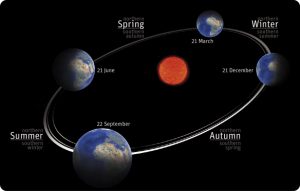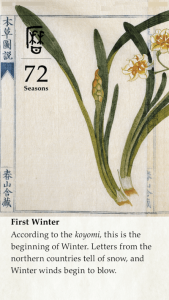The animals, trees, insects, winter-garden plants, soil and all microbiotic life are oblivious our calendar changing next week to 2017. And correctly so–the change is a human convention with flaws that sophisticated use of math and astronomy can’t help. The Mayans, the Egyptians and pretty much every human civilization have resorted to the use of extra days or months every few years to sync their calendars with the Earth’s rotation and orbit around the Sun. 
We start 2017 with the leap year behind us; we start with the adjustment made for the imperfect 365 days in our calendar. The 365.25 rotations of the Earth as it circles the sun ends each year with about a quarter of the final day still “on the books.” Until this past February we had been slowly moving out of sync with our seasons, out of sync with reality.
And in our hurry scurry lives, we are unlikely to consciously perceive this quarter of a day difference in the seasons. In the New Year, I intend to pay much more attention to the seasons and to play with them a bit. I am inspired by the ancient Japanese who named an astonishing 72 seasons in their year. http://www.nippon.com/en/features/h00124/
If we were living in Japan several centuries ago, the season of “self heal sprouts” would be just behind us and we would be in the season of “deer shed antlers.” Looking forward we would have the season of “wheat sprouts under snow”, “parsley flourishes” and “pheasants start to call.” The ancient Japanese got their list from China and revised it to conform to their climate and geography. I plan to take this idea and start a list of 36 “seasons” that conform to my little world.
the season of “self heal sprouts” would be just behind us and we would be in the season of “deer shed antlers.” Looking forward we would have the season of “wheat sprouts under snow”, “parsley flourishes” and “pheasants start to call.” The ancient Japanese got their list from China and revised it to conform to their climate and geography. I plan to take this idea and start a list of 36 “seasons” that conform to my little world.
I am challenged by giving the number four another look. Worldwide the word, season, is flexible indeed; they have six seasons in parts of India and Australia. Two seasons, wet and dry, function well in many places, primarily near the equator.
My challenge will be to not name my seasons after the negative things I encounter in the natural world, such as, “the descent of the stink bugs” or “the fire ants cometh” or “the invasion of the prairie grasses”. Not a single one of the 72 Japanese seasons has a negative name. The link above lists them all if you are skeptical that gardeners can break a year into 5-day seasons without any whining. I will try to publish my list of “seasons” in January of 2018. To follow the example set by the ancient Japanese I must look more mindfully into the positive and the beautiful. I am doubtful that I can touch the poetry of the ancient Asian gardeners, but I think it will be fun to try.
I think this is such a beautiful idea. I really look forward to seeing what your seasons look like
Very cool idea, Claudia. I, too, look forward to seeing the results a year from now. Meanwhile, the occasional update (perhaps as a tag note to a post on another subject) would be of interest.